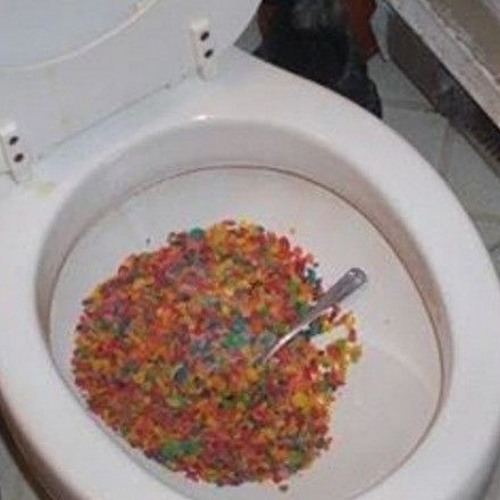Are You Permitted to Flush Food Down the Toilet?
Are You Permitted to Flush Food Down the Toilet?
Blog Article
Are you currently on the lookout for critical info on Flushing Food Down the Toilet??

Introduction
Many people are typically confronted with the dilemma of what to do with food waste, particularly when it involves leftovers or scraps. One typical inquiry that arises is whether it's fine to purge food down the commode. In this post, we'll look into the reasons that individuals may consider flushing food, the effects of doing so, and different approaches for proper disposal.
Reasons that individuals might think about purging food
Absence of awareness
Some individuals may not recognize the potential harm triggered by flushing food down the toilet. They might incorrectly believe that it's a safe technique.
Convenience
Purging food down the bathroom may appear like a quick and very easy remedy to dealing with undesirable scraps, especially when there's no neighboring trash bin readily available.
Negligence
In some cases, people may just choose to flush food out of sheer idleness, without considering the consequences of their actions.
Consequences of flushing food down the commode
Ecological influence
Food waste that ends up in rivers can contribute to contamination and harm aquatic ecosystems. Furthermore, the water made use of to purge food can strain water resources.
Plumbing concerns
Purging food can bring about clogged pipelines and drains pipes, triggering expensive pipes fixings and hassles.
Sorts of food that need to not be flushed
Coarse foods
Foods with coarse textures such as celery or corn husks can obtain entangled in pipes and trigger obstructions.
Starchy foods
Starchy foods like pasta and rice can soak up water and swell, leading to clogs in pipelines.
Oils and fats
Greasy foods like bacon or food preparation oils ought to never ever be flushed down the toilet as they can strengthen and cause clogs.
Proper disposal methods for food waste
Making use of a garbage disposal
For homes furnished with waste disposal unit, food scraps can be ground up and flushed via the pipes system. However, not all foods appropriate for disposal in this way.
Recycling
Particular food product packaging materials can be recycled, minimizing waste and decreasing environmental influence.
Composting
Composting is an environment-friendly method to dispose of food waste. Organic materials can be composted and made use of to improve dirt for horticulture.
The value of appropriate waste monitoring
Lowering environmental harm
Proper waste monitoring methods, such as composting and recycling, help minimize pollution and preserve natural deposits for future generations.
Protecting plumbing systems
By preventing the technique of flushing food down the bathroom, homeowners can avoid costly plumbing repair services and preserve the integrity of their pipes systems.
Verdict
In conclusion, while it may be appealing to flush food down the toilet for convenience, it is essential to understand the potential effects of this activity. By adopting proper waste management methods and dealing with food waste properly, people can contribute to much healthier pipes systems and a cleaner setting for all.
THINK TWICE BEFORE FLUSHING FOOD DOWN YOUR TOILET IN FALLBROOK CA
Let’s be honest, we’re really supposed to be tossing rotten or leftover food in the compost bin or trash can. But many people like to place scraps of food down the drain of, say, their kitchen sink. That’s why the garbage disposal was invented: so we can continue to place certain foods down the drain without clogging our drain in the process. Smart.
But not all of us have the luxury of having a garbage disposal installed. So, you might continue to shove food down your sink drain anyway – or worse: you might flush them down your toilet! If you’re guilty of doing the latter, you’re going to want to stop, and here’s why:
Toilet Drains Aren’t Designed to Handle Food!
There’s your answer: food just doesn’t belong in your toilet. It may seem like your toilet drain is wider than the drains of your sinks, but truth be told, that isn’t actually the case. The narrower pipes of your toilet leave your plumbing at risk for clogging if you do happen to flush your food. In addition, food doesn’t break down as quickly that toilet paper and human waste do. In turn, this leaves your toilet at risk for a nasty clog.
Although a flush of a tiny pinch of food every now and then isn’t going to completely damage your toilet, there are certain foods that should absolutely not be flushed in your toilet at all. These include starchy foods like mashed potatoes, grains, hard pieces of food that are slow to break down, and fats and oils.
The latter categories of food are particularly problematic as they may harden, expand as they absorb water, break down slowly in your system, or generally create the perfect obstruction with their gelatinous composition. These are all things you don’t want in your plumbing system!
Experiencing a Toilet Clog?
Nobody’s perfect, and we all make mistakes. Sometimes one of the mistakes people make is flushing food down their toilet and later realizing that it wasn’t the best thing to do once they see that their toilet is now clogged. Uh-oh!

I have been very enthusiastic about Flushing Food Down the Toilet? and I really hope you enjoyed reading our page. Enjoyed our write up? Please share it. Let another person check it out. We appreciate reading our article about What Can Happen If You Flush Food Down the Toilet?.
Visit My Web Page Report this page